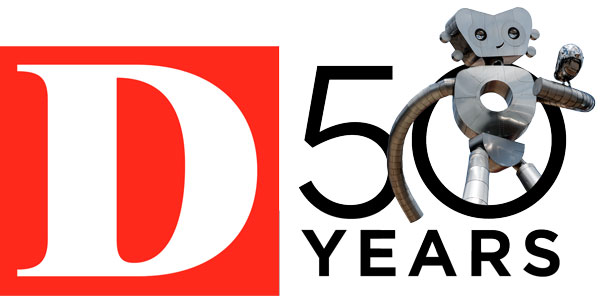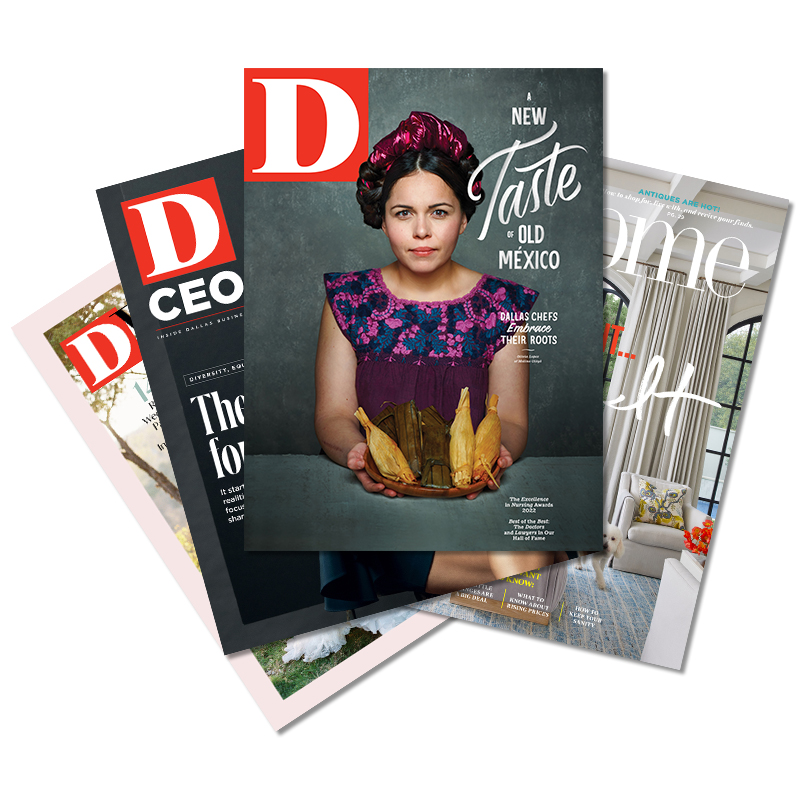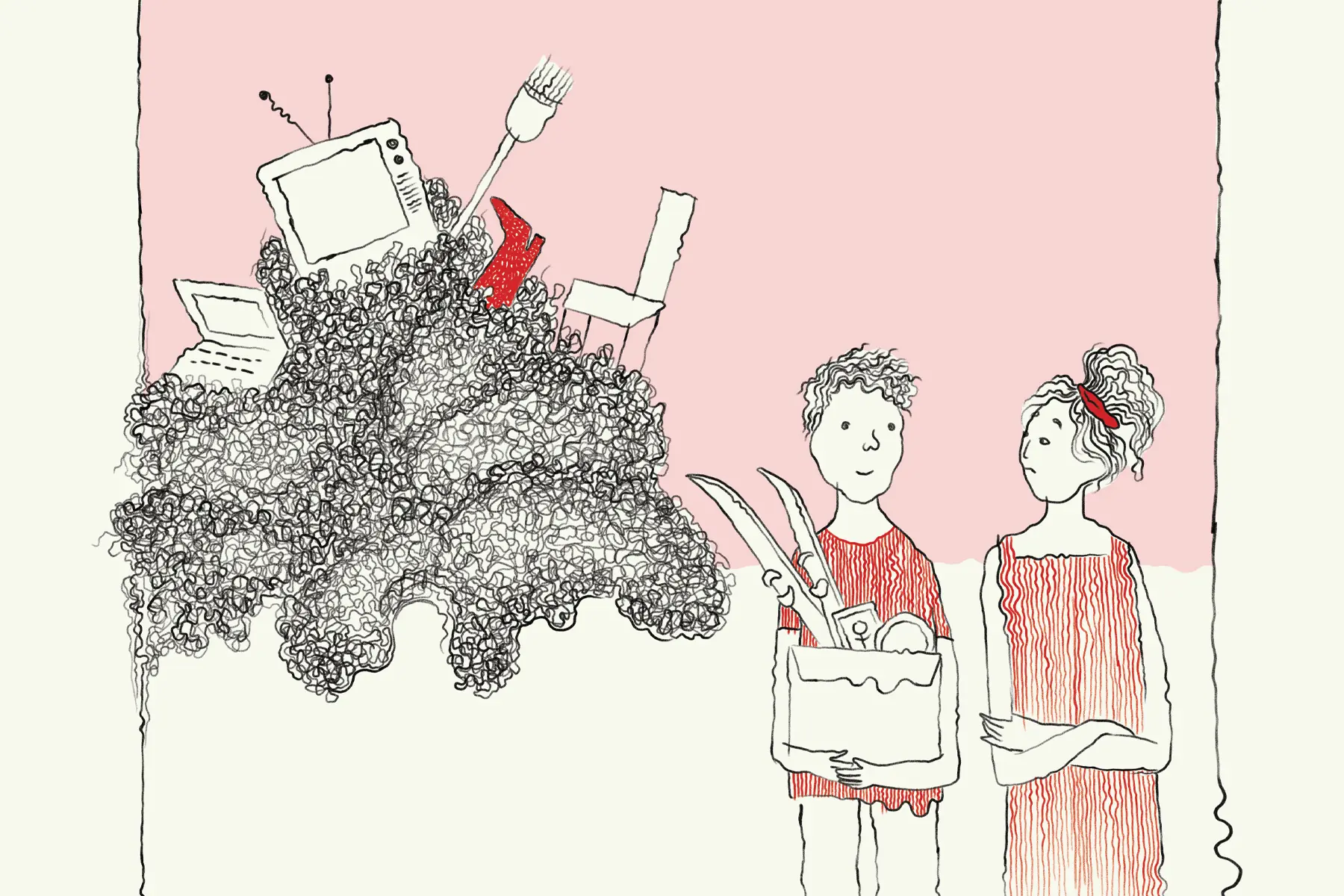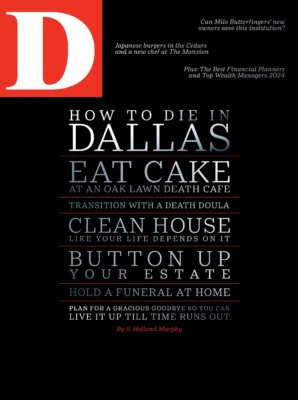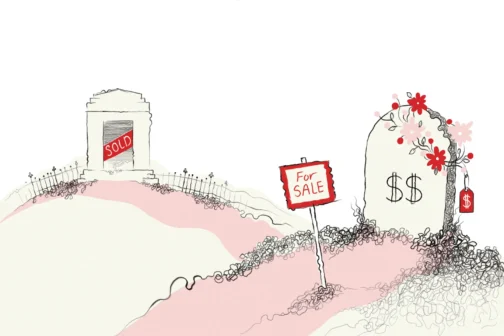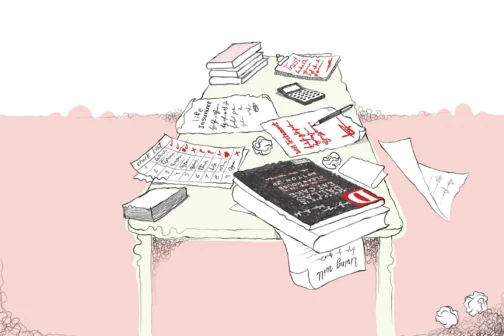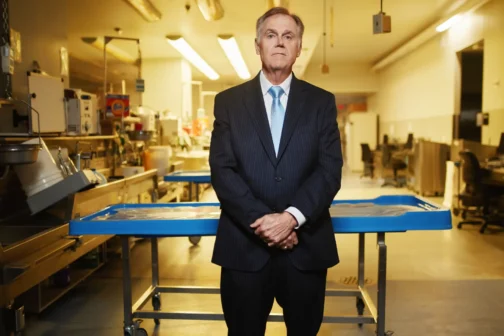When my husband and I looked closely at the floor-to-ceiling shelves in our garage, he saw the perfect chance to give his four children his grandma’s dishes, old photo albums, and sports equipment. I saw something else. Looking deep into his blue eyes—our marriage was still relatively new—I said these six magic words: ˝Your kids don’t want your shit.˝
As a former professional organizer for 15 years, I’ve worked with clients who had felt comfortable surrounded by items from their past but had reached a point where they were finally ready to make a few changes. But not everyone is open to letting go. Sometimes it takes extra motivation to put our possessions in perspective and make decluttering easier.
Enter Swedish death cleaning. In her bestselling book, The Gentle Art of Swedish Death Cleaning, Margareta Magnusson describes the process as “removing unnecessary things and making your home nice and orderly when you think the time is coming closer for you to leave the planet.” In other words, clear out your stuff so others don’t have to deal with it after you die.
You don’t have to be facing your own mortality to cull through your collections, but keeping the end of life in mind at any age can be a strong incentive to clear out your home. Consider these tips for getting started.
Begin With Big Items
Take a close look at the main living areas in your home. Are you ready to part with a bulky entertainment center or a china cabinet? What about other outdated or broken furniture relegated to the garage years ago? Some DIYers thrive on repurposing pieces, but if sanding and staining aren’t your forte, why not rehome them? You can list them on Facebook Marketplace or Nextdoor, or donate them to a charity like the Dallas Furniture Bank, an organization that will pick up furnishings for $50 and give them to people in need. Sure, check with family members first, but don’t be offended if they don’t want your furniture. “Young people aren’t looking for the same types of things that our parents had,” says Anne Baron, owner of Settle in Solutions, a company specializing in helping seniors downsize and relocate. “So it is harder and harder to get those things placed into a new home.”
Cull Through Your Clothing
When I worked with clients, many had trouble parting with clothing they hadn’t worn in years but were holding on to “just in case.” We laid their clothes on the bed, and, piece by piece, separated them into two groups: keep and donate. “How do you feel when you wear this?” I’d ask, or “How comfortable are those shoes after an hour?” or “Do you really need six little black dresses?” Exhausted after the third hour of sorting, they increased their decision-making skills along with their bags to donate. A few places to drop off gently used clothing include donation centers like The Family Place Resale Shop and thrift shops like the Genesis Benefit Thrift Store. Finding your local Buy Nothing group is another good way to give back to the community. And to reduce clothing and other textile waste in landfills, you can order Trashie’s “The Take Back Bag”; fill the pre-labeled $20 bag with unwanted clothes, shoes, and linens, and mail it in for the contents to be reused or recycled.
Declutter Your Kitchen
Without fail, each time I helped a client organize their kitchen, I heard, “I’ve been looking for that!” There’s nothing wrong with keeping useful and meaningful items as long as you can find them when needed. But do you need three sets of silverware, a dozen baking sheets, and enough mugs to open a coffee shop? Be ruthless, especially with countertop appliances that serve little purpose other than taking up space.
Take Control of Your Books
Although traveling with an audiobook or e-book saves space, I still like the feel of paper. I also like to hang on to my favorite titles. Cull through your collection and place the books you no longer want into two boxes: one for donation—don’t forget about Little Free Library—and the other to pass along to someone who would enjoy its contents. As for cookbooks, keep the ones you use often. Before you donate the rest, scan the recipes you like and either store them digitally or print them out and slip them inside clear sheets in a binder.
Pare Down Pictures
Considering the memories they can evoke, photos can be the hardest to part with. Invite your family over for dinner and make an evening of sifting through pictures. Or pick your favorites and scan them on your own or send them to be digitized. The same goes for old videos. My mom spent a week going through boxes of old photographs, and when each of us visited her, she handed us an envelope stuffed with our childhood memories.
Paring down your possessions takes time, but rather than dread the process, consider the time you spend weeding out, tossing, and making decisions about what you own as a parting gift. You’re giving your loved ones time they can spend doing anything other than trying to figure out what to do with what you’ve left behind. Best of all, they won’t have to make up excuses for why they don’t want your stuff.
Your Death Prep Checklist
When my father died four years ago, he left a file folder filled with the documents I needed to manage his care and settle his estate. The information saved time and money. Do your family a favor by completing these documents and sharing them via Google Docs. You can also store information in your own notebook, or one like The Deadbook binder or Nokbox filing system.—L.K.
This document allows the person you appoint to manage your finances if you become incapacitated and cannot make decisions for yourself.
Authorizes the person you appoint the ability to make healthcare decisions if you become incapacitated and can’t make them yourself.
Details the treatment you do or do not want to receive from your doctor when you’re terminally ill and unable to make your own decisions. Note: the person you designate as your healthcare proxy or durable medical power of attorney must abide by any treatment limitations you identify in your living will; the two documents together form your Advance Directive.
Makes it clear that no lifesaving measures will be taken to prolong your life. Make sure the person who serves as your healthcare proxy has a copy and that it’s part of your medical record.
A last will and testament provides instructions regarding how you want your property distributed after your death. (You can find information and simple will forms at txcourts.gov/forms.)
Allows individuals to own and control their property while alive. After their death, it transfers to the person they’ve specified in advance, allowing it to pass outside of probate.
A quitclaim deed is used to transfer properties in non-sale situations, for example, between family members.
Lists policy numbers and contact information.
Includes bank and investment accounts, account numbers, login information, and safe-deposit box information.
Include details for any arrangements you’ve made or want for your burial, cremation, or memorial service.
Instructions can potentially keep family from fighting over your possessions.
Contact: Lisa Kanarek is a Dallas-based writer and death doula who visits hospice patients with Gaia, the other half of her therapy animal team. Find her on Instagram @finalpathdoula.
This story originally appeared in the November issue of D Magazine with the headline “Your Kids Don’t Want Your Sh*t.” Write to feedback@dmagazine.com.
Author

